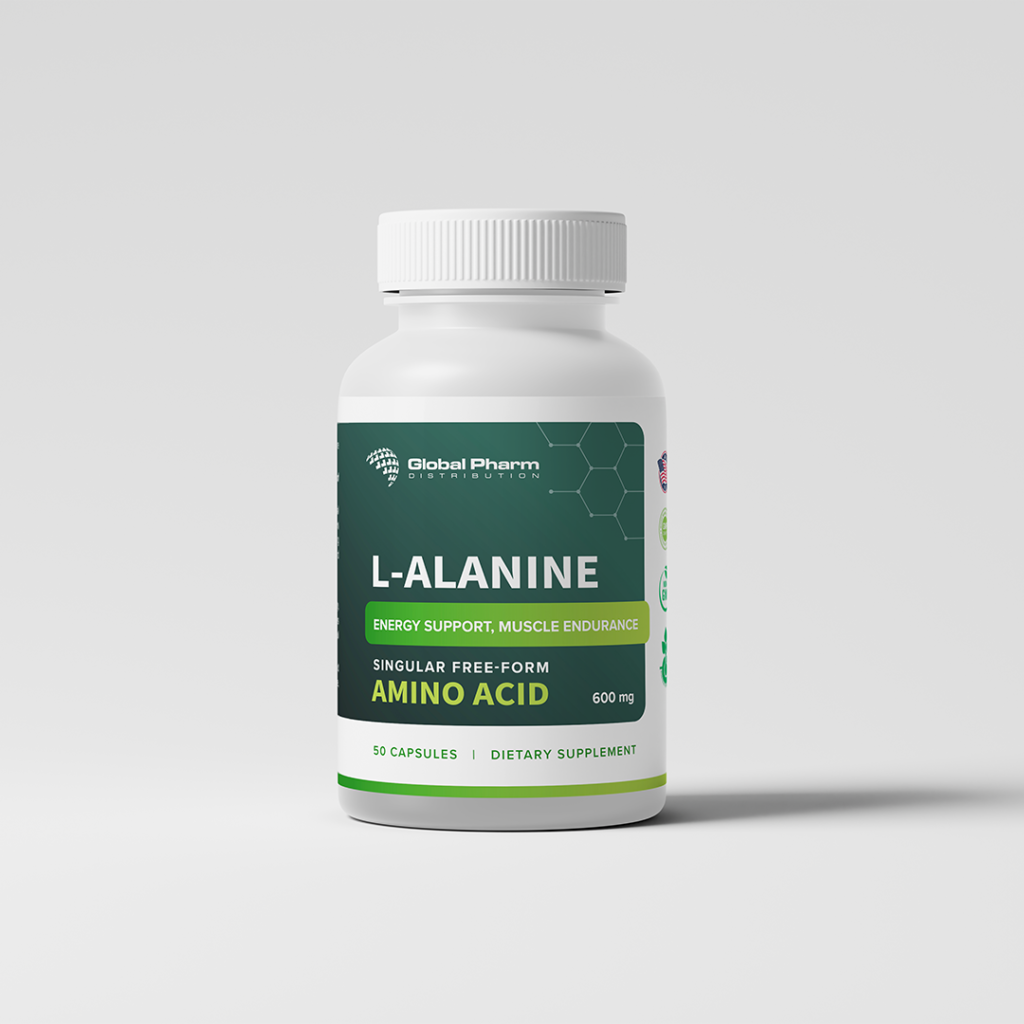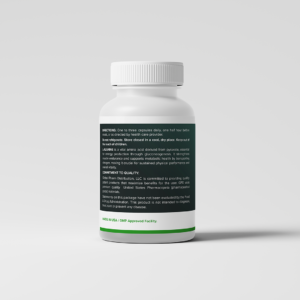Description
NDC: 53335-047-11
Weight: 4 Oz
L-ALANINE is a non-essential amino acid, first isolated in 1879, renowned for its simplicity in molecular structure due to its levorotatory (l)-methyl group on the alpha-carbon. This amino acid is integral to protein construction and plays a critical role in glucose and tryptophan metabolism, contributing to energy production. As a primary glucogenic amino acid, L-ALANINE supports the liver’s gluconeogenesis process, efficiently transporting nitrogen from muscles to the liver, which is vital for maintaining blood sugar levels and muscle integrity. Research also suggests potential cholesterol-reducing effects in animal models (e.g., Hara et al. 1990) and immune support through antibody production.
L-ALANINE is particularly beneficial for individuals seeking to enhance metabolic health, muscle maintenance, and energy balance. Elevated levels have been observed in conditions like Epstein-Barr virus and chronic fatigue syndrome, often with low tyrosine and phenylalanine, indicating its metabolic significance (e.g., Felig 1973). Manufactured using premium pharmaceutical-grade materials in a GMP-approved facility in the USA, L-ALANINE is free of fillers, binders, or coloring agents, with no known side effects.
Directions: Take 1-3 capsules daily or as advised by your healthcare provider. Pair with vitamins and minerals; GPD’s MVM (Multivitamin) is recommended. Powder equivalent: 1/4 level teaspoon per capsule.
Key Benefits
- Supports Protein Synthesis: Essential for muscle growth and repair.
- Enhances Glucose Metabolism: Aids energy production via gluconeogenesis.
- Boosts Muscle Health: Facilitates nitrogen transport and maintenance.
References
- Felig P. (1973). “The glucose-alanine cycle.” Metabolism, NIH.
- Hara H, et al. (1990). “Cholesterol-lowering effect of alanine in rats.” Journal of Nutrition, NIH.
- Berg JM, Tymoczko JL, Stryer L. Biochemistry. 5th ed. W.H. Freeman; 2002.
- Owen OE, et al. (1969). “The glucose-alanine cycle in humans.” Journal of Clinical Investigation, NIH.
These statements have not been evaluated by the Food and Drug Administration. This product is not intended to diagnose, treat, cure, or prevent any disease.
Additional Information
The following points provide insight into L-ALANINE’s plasma levels and their association with various health conditions, reflecting its role in metabolism:
- Normal Range: 17-50 micromol/100 ml.
- Conditions Associated with Low Levels:
- Ketonic Hypoglycemia
- Kwashiorkor
- Protein Restriction
- Hypoglycemia
- Viral Infection (e.g., Epstein-Barr)
- Pre-catabolic Depletion
- Conditions Associated with High Levels:
- Decompensated Diabetes
- Diseases with Secondary Lactic Acidosis
- Post-Catabolic Stress
Notes: L-ALANINE is the primary glucogenic amino acid, with the liver’s gluconeogenesis capacity saturating at approximately 900 micromol/100 ml (20-30 times normal levels). It serves as the main transporter of nitrogen from muscles to the liver, regulated by insulin (controlling tissue release) and glucagon (facilitating liver transport). Low levels may indicate metabolic stress or deficiency states (e.g., protein restriction, viral infection), while high levels are associated with conditions involving increased catabolism or impaired glucose regulation. These associations are correlative and require further research for causal confirmation. Consult a doctor or medical professional before use, especially if you have underlying health conditions or are taking other medications.
 Global Pharm Distribution, LLC
Global Pharm Distribution, LLC




